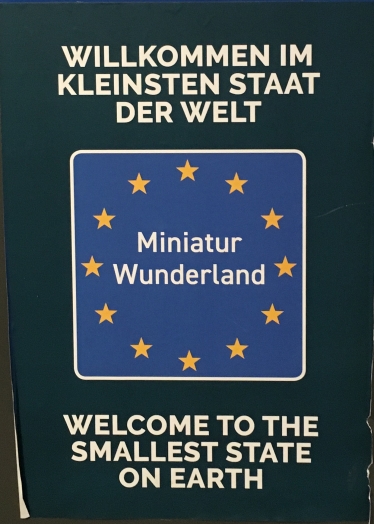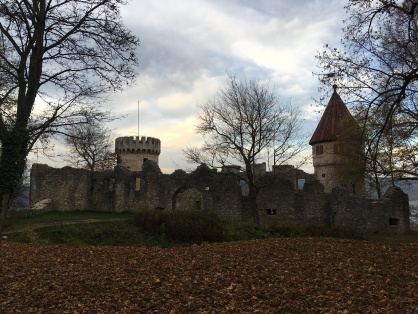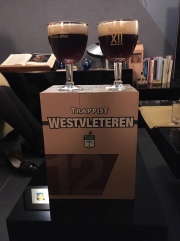National and regional borders so often seem permanent and fixed, although many of today’s borders are recently set — and continue to move even during our lifetimes. North and South Carolina’s borders were last adjusted three years ago (in 2017), Alaska was ratified as the 50th state only in 1959, and Germany’s and Belgium’s current borders were only finalized in 1990 and 1995, respectively.
Even the idea of a nation with stable borders is a concept barely two centuries old, yet our identities are uniquely connected to the current national/regional lands as well as those of the past. Alongside the identity adjustments that border changes can provoke are also the different business and tax obligations that come along with them.
 I was ruminating over such things as we crossed the northernmost border of Germany, leaving the Schleswig-Holstein region to enter South Jutland in Denmark. This border has shifted nearly a dozen times over the last 150 years. Today, Northern Schleswig is part of Denmark while both Southern Schleswig and Holstein belong to Germany (the area north of Hamburg’s Elbe River and west of Lübeck). However, in the past, these regions have been subject to claims by Sweden, the Holy Roman Empire, Prussia, and Austria, as well as those of Denmark and Germany.
I was ruminating over such things as we crossed the northernmost border of Germany, leaving the Schleswig-Holstein region to enter South Jutland in Denmark. This border has shifted nearly a dozen times over the last 150 years. Today, Northern Schleswig is part of Denmark while both Southern Schleswig and Holstein belong to Germany (the area north of Hamburg’s Elbe River and west of Lübeck). However, in the past, these regions have been subject to claims by Sweden, the Holy Roman Empire, Prussia, and Austria, as well as those of Denmark and Germany.

From the 1100s until 1864, Schleswig was a fief associated with Denmark and, until its 1815 incorporation into the German Confederation, Holstein was a Danish-ruled duchy while simultaneously being a fief under the Holy Roman Empire (complicated enough?). The Napoleonic Wars of the early 19th century stoked German nationalism, especially in the southern part of Schleswig, where nationalists wanted to unify the Schleswig-Holstein region into a single part of Germany (spoiler alert: they pretty much succeeded later). The Danish-disposed population in the north wished for a tighter connection to Denmark, and nationalists there argued that the region had longer identified as part of this Scandinavian country.
In 1848, Prussia supported the rising tide of Germanic allegiance, helping German nationalists to fight against Danish troops. Peace terms in 1852 gave Denmark the entire Schleswig-Holstein region, but conflict was never far away. Merely 12 years later, the Second Schleswig War (also known as the German-Danish War) broke out between Prussian/Austrian and Danish troops. The resulting Treaty of Vienna gave both regions to the victorious Prussia and Austria but, dissatisfied with sharing the spoils, the victors fought each other. The “last man standing,” Prussia, gained control over this part of northern Europe. Less than a decade later, in 1871, the German Empire was formed and, once again, Germany and Denmark fought over the region, to little solid conclusion.
Finally, after World War I, preferential referendum were held in the northern and southern portions of North Schleswig. The northernmost portion voted to become part of Denmark by 70% and the southern portion indicated preference for Germany by 80%. Both plebiscites were respected and each region joined the respective majority’s choice, splitting Schleswig in two. After World War II, Germany’s Schleswig region joined with Holstein as a single state (to the joy of 19th-century German nationalists, I’m sure), and these borders have remained thus for the past 75 years. I’m sure you can hear my sigh of relief (and I think I can hear yours)!

In crossing into Denmark, our destination was the little town of Aabenraa (population 16,350), on a fjord off the Baltic Sea. We had a scrumptious lunch of Smørrebrød (typical Danish open-faced sandwich) in the center of Aabenraa’s pedestrian zone, only a few blocks from something one does not expect to find in the middle of a little town: an organbuilding workshop!
Marcussen, now Marcussen & Søn, has had its shop in Aabenraa since 1830, when founder Jürgen Marcussen and his new partner since 1826, Andreas Reuter, moved it from outside of Copenhagen (as Marcussen & Reuter — no relation to the American Reuter firm). Extraordinarily, this organ-building workshop has been running for 214 years and the Marcussen family is still in charge of the company – the 7th generation!
 Finding our way into the Marcussen shop itself felt like seeking entrance via a secret passageway. The house number is attached to a main door on the street (*which isn’t the shop entrance!*), but the “Marcussen & Søn” plaque is almost hidden, attached to the sides of what looks like an old carriage entrance a few meters away. This “little door” opens to reveal a grand courtyard; the heart and center of the Marcussen workshop. The cobblestones complete the “old world” feel, even as they make walking a bit treacherous.
Finding our way into the Marcussen shop itself felt like seeking entrance via a secret passageway. The house number is attached to a main door on the street (*which isn’t the shop entrance!*), but the “Marcussen & Søn” plaque is almost hidden, attached to the sides of what looks like an old carriage entrance a few meters away. This “little door” opens to reveal a grand courtyard; the heart and center of the Marcussen workshop. The cobblestones complete the “old world” feel, even as they make walking a bit treacherous.
Walking beneath the words Soli deo gloria that adorn the shop doors, Dave and I had the privilege of meeting Claudia Zachariassen, president of Marcussen & Søn, and Daniel Schmidt Christensen, co-owner. We toured this collection of old, winding buildings, which perfectly match the Affekt of the courtyard, where Marcussen makes their new instruments and rebuilds and restores older ones.
On this Sunday afternoon, the shop was quite empty, but one could imagine how busy it would feel (and how often collisions would be nearly avoided in the narrow hallways and stairwells) when the full contingent of Marcussen employees are working. Neither the cramped interior nor the calm courtyard give indication of the myriad of border changes that Marcussen has weathered since their founding in 1806, finding themselves in Germany one decade, Prussia the next, and Denmark after that. Methodologies, production, and even advertising have had to change, adjusting to the market in which they found themselves after the dust of each conflict had settled. Marcussen’s identity as a Danish firm is strongly evident in their work and ideology, but this identity has undeniable Germanic influences in their style – due to both changing borders and proximity, just as a start. Blood runs deep, and so does history.
The daylight was quickly fading (only 8 hours of sun here in late January), so after two hours at the shop, we drove north to Århus. The second-largest city in Denmark has always felt like the younger sibling to the capital of Copenhagen – and somewhat acts like one, competing with the the “City of Spires” for such titles as “largest” and “tallest” and “greatest.” Four times smaller than Copenhagen, Århus calls itself the “world’s smallest big city” and it feels like that: quite manageable, very charming, larger than one initially thinks, and full of history.
First founded as a Viking settlement in the 8th century, Århus and its natural harbor (the Bay of Aarhus) together formed a popular market town and destination on the Baltic Sea until growth stagnated during the Swedish Wars of the 17th century and, later, the German occupation in the 19th century (due to the previously-mentioned Schleswig Wars). By the middle of the last century, when the northern Schleswig region was returned to Denmark, Århus had already taken its place as the second largest city in the country as well as the heart of the western Denmark region.
 We stayed the night in a very compact Cabinn Hotel (catchphrase: “All you need to sleep”), and I’m still trying to figure out how “All you need to wash” could fit into one tiny single-use package of liquid. I’m also still unsure how one can properly wash in something resembling a sub-mariner’s bathroom, as I was strongly reminded of the bathing facilities on the 1950 USS Albacore submarine, now in a museum in Portsmouth, New Hampshire…
We stayed the night in a very compact Cabinn Hotel (catchphrase: “All you need to sleep”), and I’m still trying to figure out how “All you need to wash” could fit into one tiny single-use package of liquid. I’m also still unsure how one can properly wash in something resembling a sub-mariner’s bathroom, as I was strongly reminded of the bathing facilities on the 1950 USS Albacore submarine, now in a museum in Portsmouth, New Hampshire…
There are times when I am quite grateful to be 5’3″ (not something an organist in Europe often says).

Monday morning found us entering the Århus Cathedral, which was first built in the 12th century and completed in 1300. Only 30 years after it was finished, however, the original Romanesque building tragically burned down, alongside much of the town, and it had to wait another 120 years to be rebuilt. Finally, the Cathedral rose again, expanded and in Gothic style — and it is this building, mostly completed in 1500, that we visited. Currently, the Cathedral is closed to the general public during weekdays due to the most exciting of events: their instrument is being rebuilt and expanded by Marcussen & Søn. Fortunately, they kindly made an exception for an itinerant organist and organbuilder.
 The Cathedral’s glorious Gothic interior sends geometrically-painted ribbed vaults soaring upwards, contrasting with the whitewashed walls and clear windows that make this room seem far brighter than the rather foreboding clouds outside would seem to allow. Scaffolding hid the organ’s magnificent 1730 Lambert Daniel Kastens façade, but ornate, gilded carvings peaked out from behind the metal grill, hinting at that which adorned its west end for almost three centuries. No stranger to things ornate or things old, this cathedral holds a number of frescos (220m2, to be
The Cathedral’s glorious Gothic interior sends geometrically-painted ribbed vaults soaring upwards, contrasting with the whitewashed walls and clear windows that make this room seem far brighter than the rather foreboding clouds outside would seem to allow. Scaffolding hid the organ’s magnificent 1730 Lambert Daniel Kastens façade, but ornate, gilded carvings peaked out from behind the metal grill, hinting at that which adorned its west end for almost three centuries. No stranger to things ornate or things old, this cathedral holds a number of frescos (220m2, to be

exact), all but one painted between 1470 and 1520, and a stunning altarpiece, by Lübeck artist Brent Notke, which was dedicated in 1479.
The white-ish scaffolding made the west end seem brighter, but taking a look behind that metal “curtain” gives an idea of what this museum-restored façade will look like when it is finally revealed in the coming months. I could not have chosen a better time to try climbing scaffolding for the first time, and the tour of this fascinating instrument behind its façade made every step more than worthwhile.
Lambert Daniel Kastens, a student of Arp Schnitger, built an organ of 43 stops over three manuals and pedals for the Århus Cathedral in 1730, of which only the façade and a few ranks (mostly in that façade) remain today. 150 years and an unsuccessful rebuild in 1855 later, local Århus builder Johan Andreas Demant was contracted to build a new organ in 1876, still with 43 stops over three manuals and pedal and, reportedly, classical tonal leanings.

Barely half a century later, this longest cathedral with the tallest tower in Denmark needed the largest organ. The Cathedral selected Bavarian-born organbuilder Theodor Frobenius for the new instrument. Frobenius’ romantic stoplist was almost double the size of the Kastens and Demant instruments, with 83 stops over four manuals and pedal.
It is back to the Frobenius organ’s tonal proclivities and stoplist that Marcussen & Søn are seeking to return this instrument. In the 92 years since that organ’s 1928 completion, it has gone through a myriad of changes, another example of an instrument forced to follow the progressively-more-rapidly changing fashions of the last century. In 1940, following the newer inclinations of the Organ Reform Movement, Frobenius’ organ was expanded with mutations, and in the late 1950s, the pipework and voicing was drastically altered to favor contrapuntal lines. Twenty-five years later, tastes were changing again and the Cathedral’s organist sought a more romantic sound, sparking yet another rebuild of the instrument.
So, a large part of Marcussen & Søn’s hard work today is in the realms of Nancy Drew and Sherlock Holmes: looking through Frobenius’ records and notes (in Danish, German, and Swedish) to search for and deduce information that may have long been lost. There is never a dull moment in organbuilding!
Enthusiasm for this challenge is evident in the energy of the Marcussen team, Kristian Krogsøe (the organist of the Cathedral who treated us to a mini-performance on the stops that were thus far speaking in January), and the organ consultant, Anders Johnsson.
Doubtless, a return to Århus to hear the organ and explore the Cathedral more will be necessary after they finish their work in late summer 2020!!
Our 18 hours in Århus were far too few, so after a coffee and some very tasty (and expensive) Danish pastries, we returned to Hamburg Airport for our flight back to the southwest, arriving with plenty of time for a beer and wonderful rehashing of an incredible weekend. A weekend full of instruments, food, and time with dear friends, every second sent far too quickly! For certain, however, more time in Denmark next time!!
Raising a glass to wish you all safety, health, and good food, dear friends!

P.S. If you’re curious to read more about Marcussen & Søn’s work on the Frobenius organ in Århus, I’ve just had the privilege of writing an article about it for the April 2020 edition of Choir & Organ, which should be released in the next couple of weeks!
















































































































































































